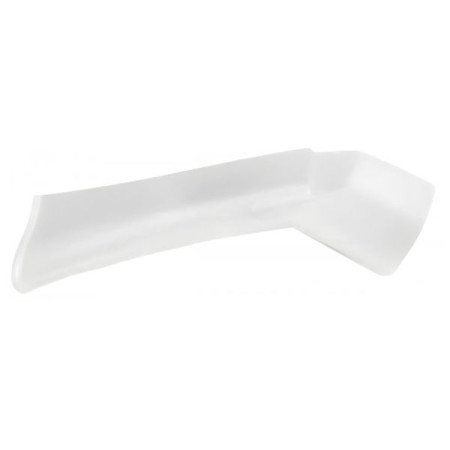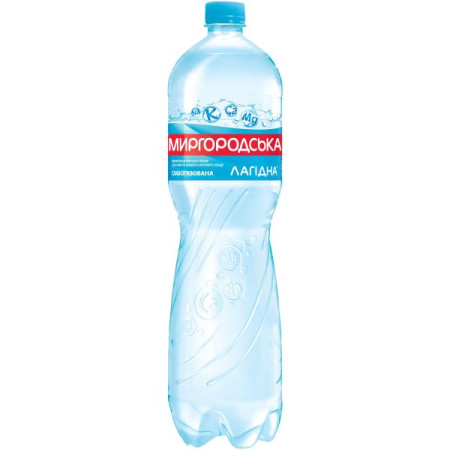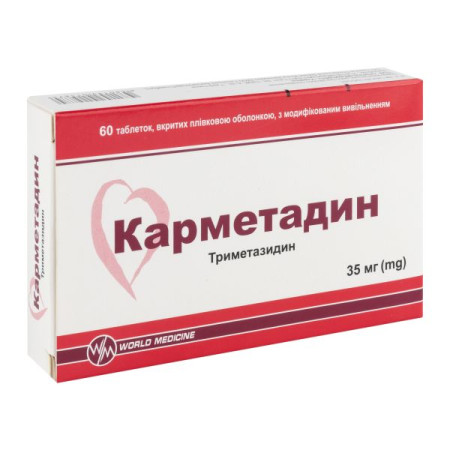Leuprorelin Sandoz implant 5 mg syringe No. 1

Instructions for Leuprorelin Sandoz implant 5 mg syringe No. 1
Composition
active ingredient: leuprorelin acetate;
1 implant contains 5 mg of leuprorelin (as leuprorelin acetate);
excipient: polylactic acid.
Dosage form
Implant.
Main physicochemical properties: implant from white to yellowish color with a homogeneous surface.
Pharmacotherapeutic group
Gonadotropin-releasing hormone analogues. ATX code L02A E02.
Pharmacological properties
Pharmacodynamics
The active substance of the drug Leuprorelin Sandoz - leuprorelin acetate - is a synthetic analogue of the natural hypothalamic gonadotropin-releasing hormone (LHG), which controls the secretion of the gonadotropin hormones LH (luteinizing hormone) and FSH (follicle-stimulating hormone). These hormones stimulate the synthesis of steroids by the gonads.
Unlike physiological LHG, which is released in a pulsatile manner by the hypothalamus, leuprorelin acetate (also called an LHG agonist) provides a continuous blockade of the LHG receptors of the pituitary gland throughout the treatment period, as a result of which the pituitary gland ceases to perceive and respond to the initial short-term stimulation. As a result of the reverse inhibition of pituitary gonadotropin secretion, testosterone levels decrease, which affects the growth of prostate cancer tissue. Under normal circumstances, this tissue is stimulated by dihydrotestosterone, which is released in response to the decrease in testosterone levels in prostate cells.
Continuous administration of leuprorelin acetate results in a reduction in the number and sensitivity (so-called down-regulation) of pituitary receptors, and consequently in a reduction in LH, FSH and DHT levels. This in turn leads to a reduction in testosterone levels to the castrate range. Animal studies have demonstrated an antiandrogenic effect and inhibition of prostate carcinoma growth. According to experimental and clinical studies, a three-month course of treatment with leuprorelin acetate after initial stimulation results in a reduction in gonadotropin secretion. In men, subcutaneous administration of leuprorelin acetate initially causes an increase in LH and FSH levels, which is accompanied by a temporary increase in testosterone and dihydrotestosterone levels. Due to the short-term worsening of the clinical picture in the first 3 weeks of treatment, which was observed in isolated cases, men with prostate cancer may be prescribed additional antiandrogens at the initial stage of treatment. Long-term use of leuprorelin acetate, on the other hand, leads to a decrease in LH and FSH levels. Androgen levels in men decrease to values recorded after surgical removal of both testicles. These changes usually occur 2-3 weeks after the start of therapy and persist throughout the entire course of treatment. However, when considering the option of treatment with leuprorelin acetate, it is necessary to assess the hormonal sensitivity of the prostate cancer tissue and the potential therapeutic benefits of orchiectomy. If necessary, orchiectomy can be replaced by 3-month doses of leuprorelin acetate. According to the data obtained, castrate testosterone levels can be maintained for more than 5 years with continuous use of leuprorelin acetate.
Pharmacokinetics
After injection of the implant, a continuous release of leuprorelin acetate (the active ingredient) from the lactic acid polymer begins, which lasts for up to 182 days (26 weeks). Over time, the polymer is absorbed in a similar way to surgical suture material.
2 hours after a single dose, leuprorelin levels reach a peak of 5216 pg/mL (5.2 ng/mL). The area under the pharmacokinetic curve over three months of treatment is 32.4 ng/mL*d. Serum levels are maintained for up to 182 days (26 weeks) after administration. Serum levels are maintained for up to 182 days (26 weeks) after administration. The volume of distribution of leuprorelin in men is 36 L; total clearance is 139.6 mL/min.
Repeated use leads to a permanent decrease in testosterone levels to castration (sterility) levels, in the absence of a temporary increase in testosterone levels after the first injection.
In patients with impaired renal or hepatic function, leuprorelin levels were found to be similar to those in patients with normal renal and hepatic function. Some patients with chronic renal failure had higher serum leuprorelin levels. However, this observation is unlikely to be of clinical significance.
Indication
Treatment of hormone-dependent advanced prostate cancer.
Contraindication
Hypersensitivity to leuprorelin or other gonadotropin-releasing hormone analogues or polylactic acid. Hormone-independent tumors. Surgical castration. Leuprorelin Sandoz should not be used in women and children.
Interaction with other medicinal products and other types of interactions
Since antiandrogen therapy may prolong the QT interval, the possibility of concomitant use of Leuprorelin Sandoz with drugs that prolong the QT interval or can induce bidirectional tachycardia, such as class IA antiarrhythmic drugs (e.g. quinidine, disopyramide, amiodarone, sotalol, dofetilide, ibutilide), methadone, moxifloxacin, neuroleptics and others should be carefully evaluated (see section "Special instructions").
Application features
Patients with hypertension require close monitoring. There is an increased risk of depression, symptoms of emotional lability such as crying, irritability, impatience, anger and aggression in patients taking gonadotropin-releasing hormone antagonists.
At the beginning of treatment with the drug, a short-term increase in serum testosterone levels often occurs, which may be accompanied by a temporary exacerbation of certain clinical symptoms (the appearance or exacerbation of ostalgia, urinary tract obstruction with associated complications, spinal cord compression, myasthenia gravis, lymphoedema). With continued treatment with the drug, complications usually resolve on their own. Allergic and anaphylactic reactions, including local reactions at the injection site and systemic reactions, may occur. At the initial stage of treatment, additional antiandrogens may be considered to reduce the severity of possible complications (initial increase in testosterone and exacerbation of clinical symptoms).
The success of therapy should be regularly monitored by clinical tests (digital rectal examination of the prostate, ultrasound, skeletal scintigraphy, computed tomography) and analyses of phosphatase levels or prostate-specific antigen (PSA) and testosterone concentrations in serum.
Hypogonadism resulting from long-term treatment with LHRH analogues and/or orchiectomy may lead to osteoporosis with an increased risk of fractures. The development of osteoporosis is more pronounced after orchiectomy (with increased cortisol levels) than after administration of LHRH analogues.
In high-risk patients, additional administration of bisphosphonates may prevent bone demineralization.
Patients with brain or spinal cord metastases, neurological disorders, and urinary tract obstruction require very close monitoring, especially during the first few weeks of treatment. In rare cases, spinal cord compression and renal failure have been observed in such patients.
When treated with Leuprorelin Sandoz, doping tests may show a positive result.
Altered glucose tolerance has been observed in some patients treated with LHRH analogues. Patients with diabetes should be monitored during treatment with the drug.
Antiandrogen therapy may prolong the QT interval.
In patients with a history of QT prolongation (or associated risk factors), as well as in patients receiving concomitant medications that may prolong the QT interval (see section 4.5), physicians should assess the risk-benefit ratio, including the potential for bidirectional tachycardia, before initiating treatment with the drug.
Ability to influence reaction speed when driving vehicles or other mechanisms
Due to the occurrence of fatigue, sometimes very severe fatigue, especially at the initial stage of treatment in some patients, which may be due to the underlying tumor disease, the drug, even when used correctly, may inhibit the sharpness of reactions and adversely affect the ability to drive a car and work with complex mechanical equipment. Alcohol enhances this negative effect. The possibility of adverse reactions from the nervous system and the organs of vision should also be taken into account.
Use during pregnancy or breastfeeding
The drug is intended for the treatment of male patients only.
Method of administration and doses
The recommended dose is 5 mg of leuprorelin once every 3 months. If there is no temporary improvement or positive dynamics, continued treatment is not recommended.
In exceptional cases, the use of the drug is postponed for a period of up to 4 weeks, the therapeutic effect is not reduced in most patients.
The drug should be administered by a doctor with experience in anticancer therapy. The implant is inserted under the skin in the abdomen.
Instructions for use:
Read these instructions carefully, as the syringe supplied with this product may be different from those previously used.
1. Disinfect the injection site on the anterior abdominal wall below the navel line.
2. Remove the syringe from the sterile bag and check for the presence of the implant in the chamber (see boxed area). If necessary, hold the syringe up to the light or gently shake it.
3. Pull the syringe plunger all the way out until you see the entire line in the second window.
Attention: The plunger can only be pushed forward to insert the implant if it has been fully pulled out!
5. Hold the syringe barrel with one hand. With the other hand, pinch the skin of the patient’s anterior abdominal wall below the navel line. See the figure. With the needle pointed upward, insert the needle all the way into the subcutaneous tissue. Do this at a slight angle, almost parallel to the skin.
6. Gently pull the syringe back about 1 cm. This will create a puncture channel for the implant.
7. Insert the implant into the puncture channel by pushing the plunger forward until it locks into place and you hear a clicking sound.
8. Remove the needle. To ensure proper implant insertion, check to see if the white tip of the plunger is visible from the end of the needle.
As a rule, after 3 months it is possible to determine whether the prostate carcinoma is androgen-sensitive. The main diagnostic parameter is the analysis of the concentration of prostate-specific antigen (PSA), usually above 10 ng/ml in an active state of tumor development. In the samples, the PSA value was determined after androgen removal with the use of the drug at a dose of 5 mg. However, PSA values, like testosterone values, should be determined before the start and after 3 months of use of the drug. The test results are considered positive if after three months the testosterone concentration is at a sterile level (< 1 ng/ml) and the PSA value has decreased. A decrease in PSA value (approximately 80% of baseline) at an early stage can be considered a positive indicator of a long-term response during androgen removal. In this case, hormone-suppressive therapy is indicated.
Test results are considered negative if the PSA value remains unchanged or increases as the patient's testosterone decreases. In such cases, continued hormone-suppressive therapy is unacceptable.
However, if the patient demonstrates a clinical response (e.g., pain relief, pain on urination, and return of the prostate to normal size), false negative results should be considered. In such rare cases, treatment with Leuprorelin Sandoz 5 mg should be continued for a further three months and PSA levels should be monitored. In addition, the patient's clinical symptoms should be closely monitored.
As a rule, treatment of chronic hormone-dependent prostate carcinomas with the use of the drug requires a long period of treatment.
The therapeutic effect of treatment should be regularly checked by clinical examinations (rectal palpation of the prostate, ultrasound, bone scan, computed tomography) and by testing phosphatase or PSA levels and serum testosterone (especially if there are signs of tumor progression despite adequate therapy).
Children
Do not use to treat children.
Overdose
The available data do not contain information about symptoms of intoxication.
In case of overdose, the patient should be given symptomatic treatment and, if necessary, supportive therapy.
Adverse reactions
Due to the suppression of certain sex hormones, undesirable side effects may develop. The frequency of side effects is defined as follows: very common (≥ 1/10), common (≥ 1/100 to < 1/10), uncommon (≥ 1/1000 to < 1/100), rare (< 1/10000), frequency unknown (the available data do not allow an estimate of the frequency).
The most common side effects of leuprorelin treatment are hot flashes and increased sweating, occurring in 10% of patients.
At the beginning of treatment, there is usually a short-term increase in serum testosterone levels, which may temporarily exacerbate certain symptoms of the disease (bone pain or increased bone pain, urinary tract obstruction and its consequences, spinal cord compression, leg muscle weakness, lymphatic edema). This increase in symptoms usually regresses spontaneously, without the need for discontinuation of leuprorelin.
From the nervous system
Uncommon: headache, dizziness, anxiety, hallucinations, depression, fainting, hypoaesthesia, insomnia, lethargy, memory impairment, mood changes, nervousness, neuromuscular disorders, numbness, paresthesia, peripheral neuropathy, taste disturbance, pre-existing symptoms.
Rare: taste disorders, olfactory disorders, involuntary movements, insomnia, visual disorders, skin sensitivity disorders, pituitary stroke after the first administration of leuprorelin in patients with pituitary adenoma, cases of suicidal thoughts and suicide attempts in patients.
Respiratory system
Common: dyspnea, cough, pharyngitis.
Uncommon: difficulty breathing, hemoptysis, emphysema, epistaxis, pleural effusion, pleural friction rub, pneumonia, pulmonary fibrosis, pulmonary infiltrates, respiratory distress, sinus congestion.
Not known: interstitial lung disease.
From the digestive tract
Common: nausea, vomiting, diarrhea or constipation, flatulence, dry mouth, gastric and duodenal ulcers, gastrointestinal disorders with possible bleeding, liver dysfunction, increased appetite, rectal polyps, thirst.
On the skin and subcutaneous tissue.
Uncommon: rash, maculopapular rash, alopecia, night sweats, dermatitis, dry skin, pruritus, increased/decreased hair growth, feeling of a lump in the throat, pigmentation, skin lesions, urticaria.
Rare: skin/ear carcinoma.
Common: arthralgia.
Uncommon: ankylosing spondylitis, myalgia, pelvic fibrosis, spinal fracture, paralysis, tenosynovitis-like symptoms, ossalgia.
From the genitourinary and reproductive system
Very common: decreased libido and sexual potency.
Common: dysuria, nocturia, pollakiuria.
Uncommon: dysuria, haematuria, testicular pain, testicular atrophy, bladder spasms, urinary incontinence, penile dysfunction, prostate pain, genitourinary tract infection.
From the endocrine system
Uncommon: gynecomastia, diabetes mellitus, thyroid enlargement.
Rare cases of pituitary hemorrhage after the first administration in patients with pituitary adenoma.
From the side of metabolism, metabolism
Common: increased appetite.
Uncommon: decreased appetite, changes in metabolic status in patients with diabetes mellitus (decreased or increased blood glucose levels), abnormal weight gain, hypercalcemia and hypercreatinemia, dehydration, hyperlipidemia (increased total cholesterol, low-density lipoproteins, triglycerides), hyperphoto, hypoproteinemia, hyponatremia, hyperuricemia, hyperbilirubinemia, weight loss.
Cardiovascular system
Very common: hot flashes with episodes of increased sweating, vasodilation.
Uncommon: angina pectoris, arrhythmia, palpitations, changes in blood pressure (hypertension or hypotension), bradycardia, chronic heart failure, changes in electrocardiogram (ECG), auscultatory murmurs, myocardial infarction, phlebitis, phlebitis, phlebitis, thrombosis, transient ischemic attacks, varicose veins.
Not known: QT prolongation.
Blood and lymphatic system disorders
Uncommon: anemia, ecchymoses, lymphedema, increased prothrombin and partial thromboplastin time, thrombocytopenia, leukocytosis, leukopenia, eosinophilia.
Systemic disorders and injection site reactions
Rare: fatigue, photosensitivity reactions, swelling in the temporal bone area, jaundice, local skin reactions, in particular redness of the skin at the injection site, which usually resolves with further treatment.
Uncommon: injection site reactions including pain, inflammation, sterile abscess, tissue induration, hematoma.
On the part of the immune system
Rare: systemic allergic reactions (fever, itching, skin rash), anaphylaxis.
From the organs of vision
Uncommon: visual impairment, amblyopia, vision blurred, ophthalmological disorders, dry eye.
From the side of the organs of hearing and vestibular apparatus
Uncommon: hearing impairment, tinnitus.
Neoplasm
Uncommon: sudden exacerbation of prostate cancer, exacerbation of prostate cancer.
Laboratory studies
Uncommon: increased levels of enzymes such as lactate dehydrogenase (LDH) and alkaline phosphatase (ALP), as well as transaminases, in particular ALT (serum alanine aminotransferase), AST (serum aspartate aminotransferase) and γ-GT, increased triglycerides, increased prothrombin time, prolonged blood clotting.
Not known: in isolated cases, abscess at the injection site.
Note.
Response to therapy can be monitored by measuring serum testosterone, acid phosphatase, and PSA levels. Testosterone levels usually increase at the beginning of therapy, then decline within 2 weeks. After 2 to 4 weeks, testosterone levels reach orchiectomy levels and remain at these levels throughout the remainder of treatment.
Bone density may decrease during treatment with the drug. Reactive bone changes can be monitored by bone scintigraphy.
Transient increases in acid phosphatase levels may occur at the beginning of treatment. Values usually return to normal within a few weeks.
Expiration date
4 years.
Storage conditions
Store above 30°C.
Keep out of reach of children.
Packaging
1 clear pre-filled syringe with implant and metal needle with polyethylene protective cap in an aluminum bag.
Vacation category
According to the recipe.
Producer
Ever Pharma Jena GmbH.
Location of the manufacturer and its business address
Otto-Schott-Strasse 15, 07745 Jena, Germany.
There are no reviews for this product.
There are no reviews for this product, be the first to leave your review.
No questions about this product, be the first and ask your question.













